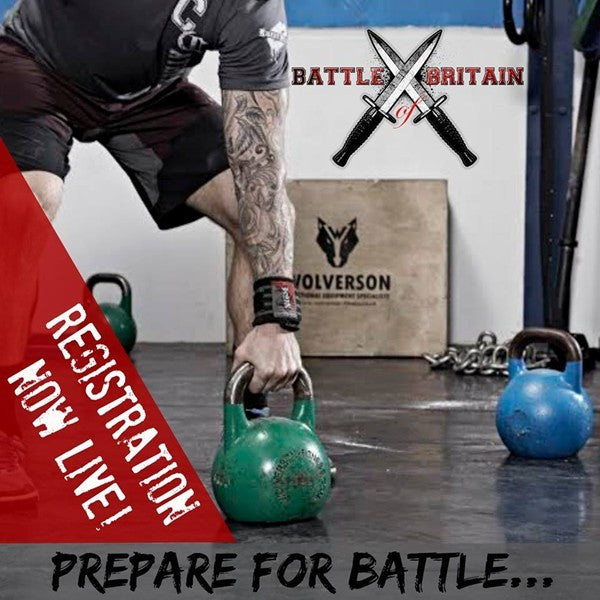Another brilliant article from Matt Shore – Founder of Train Strong Personal Training, Gold Standard Certified StrongFirst Kettlebell Instructor, GUN-eX Master Trainer, and one of our new Wolverson Fitness Ambassadors.

As a professional athlete and Personal Trainer, Matt has many years valuable perspective on the best approaches to the perfect workout – here he reflects on the real benefits of an all-out ‘Beast Mode’ workout, and if it’s really the best way for athletes, and their trainers, to make progress...
Beast Mode Disengaged
If you are into fitness and spend any time on social media, it’s likely you will have seen a multitude of people heading to train while declaring a whole host of hashtags and phrases such as: “Beastmode Engaged”, “No Pain, No Gain”, “Going to Smash It”, “Pain is weakness leaving the body”, “Sh*ts Just Got REAL” and then finishing said training and informing the world of how they “Just Killed their workout”, “Smashed it”, “Went Psycho” and “Flipped the Crazy Switch.”
In my younger years as a wanna be bodybuilder I too went through a phase of crazy pre workout stimulants, feeling jacked and waging war on myself in the gym.
Back then it was fun at least for a while – that is until the burnout came, the lack of progress, the constant fatigue and the worst bit – the injuries, meaning at best, compromised training, at worse, no training for periods of time.
Is Beastmode Really Necessary?
Now as a 41 year old trainer who has seen pretty much everything in the fitness industry, I recognise how “Engaging Beastmode” just isn’t required nor healthy in trying to achieve sustained, consistent long term results.
I am a big believer in looking to the people at the top of their game when it comes to Truth about training and how to achieve outstanding results.
World class runners, cyclists, weight lifters, Olympic athletes and so on.
All of these share one thing in common; consistent, progressive training that is repeatable time and time again with a lifestyle and access to resources that support their volume of training.
If these top level athletes aren’t “Engaging Beastmode” and “Smashing it Up” every workout you can be pretty sure that your general public and average fitness enthusiast certainly doesn’t need it – especially when you add in factors such as full time jobs, stress, family life, lack of movement and less than optimal nutrition.
Over the years I have trained a lot of people from all walks, from Elite Level Runners to complete beginners and the older I get, the more I understand the need for consistent moderation and repeatability.
If you are a trainer yourself who believes in the philosophy of if hard is good, harder is better and judges the effectiveness of your training methods by the level of DOMS suffered by your clients in the following days I would suggest a strong hard look at your confidence levels and knowledge base as trainer.
In my experience all most people really need is:-
-
·To have more mobility and flexibility.
-
·To become more conscious of movement and control.
-
·To become stronger.
-
·To develop the cardiovascular system.
-
·To have fun doing it.
When I work with people I help them to become better skilled at exercise and movement. That means a focus on the practice of movements and getting better at it.
Getting better at it means doing it frequently which, if you are in tatters with massive DOMS from that “Beasting” isn’t going to help performance of the exercise to the best of ability.
The human body is incredibly sensitive. Sure, it’s resilient as hell and can sustain untold abuse but I am much more interested in the nurture approach to training.
Gradually expanding comfort zones and nudging out of them fairly regularly so that over time our comfort zone develops to the extent that it engulfs our previous bests or maxes without having to constantly test it for confirmation that yes, our training is actually doing what it should be doing.
Getting results isn’t that hard – it’s really not – as long as training is consistent, eating is good and lifestyle supports your endeavours.
Don’t get me wrong – from time to time it can be fun to “flip the crazy switch” and “Go Beastmode” but these sessions should be few and far between – especially if you value the longevity of your training career.


